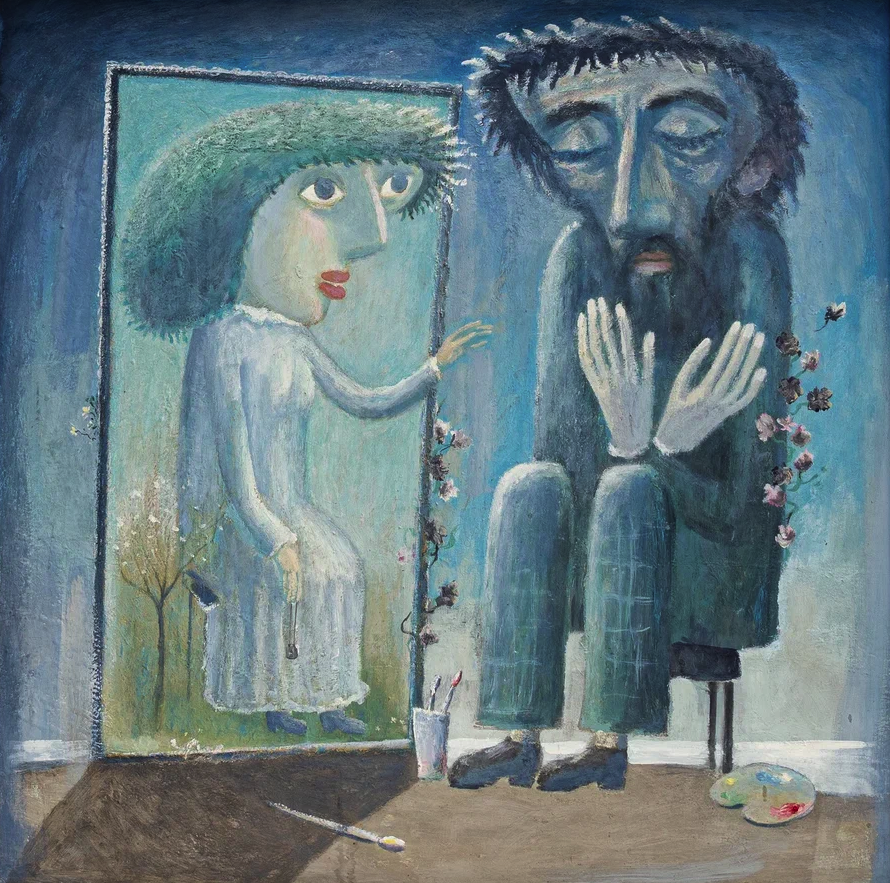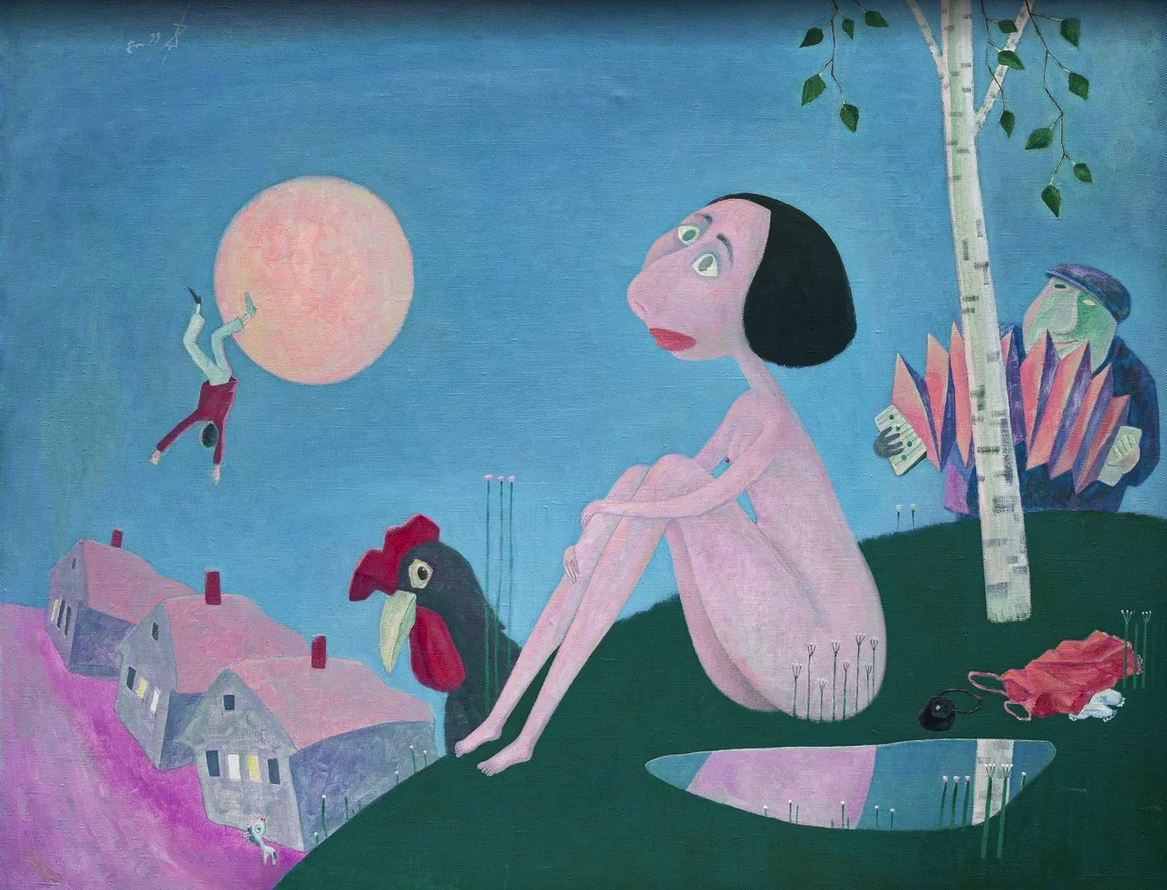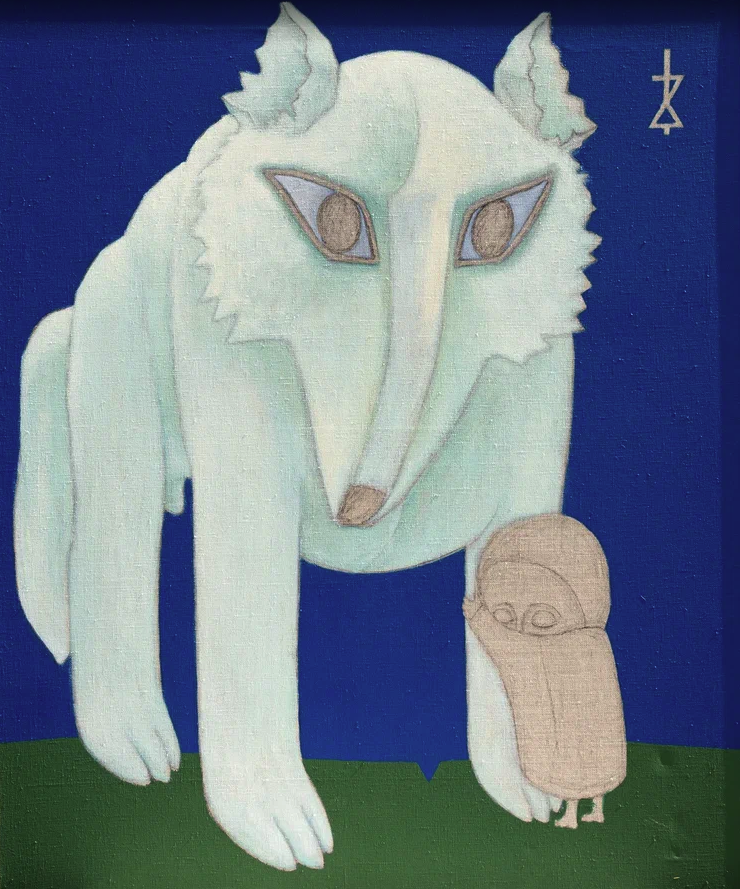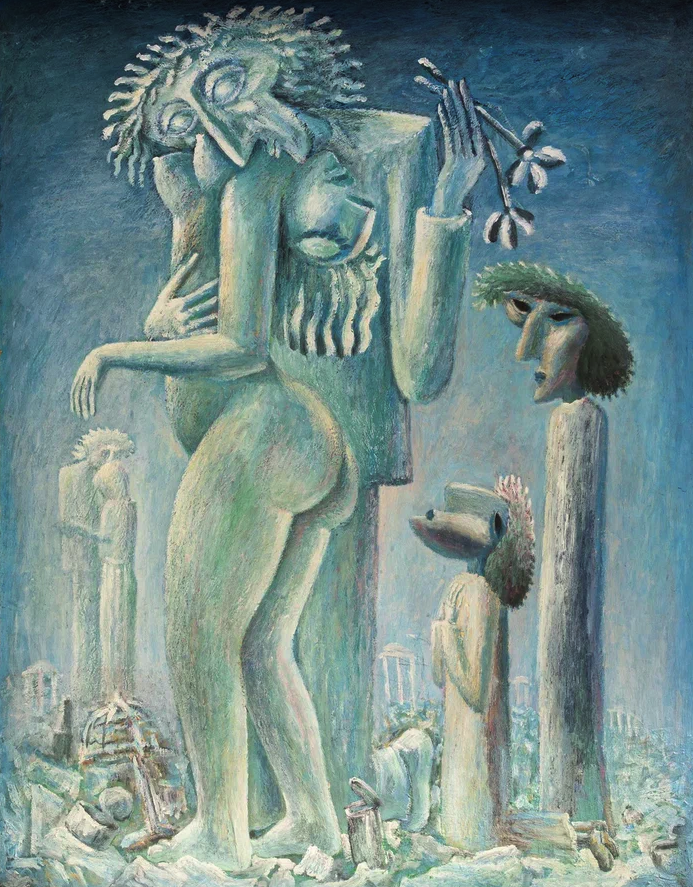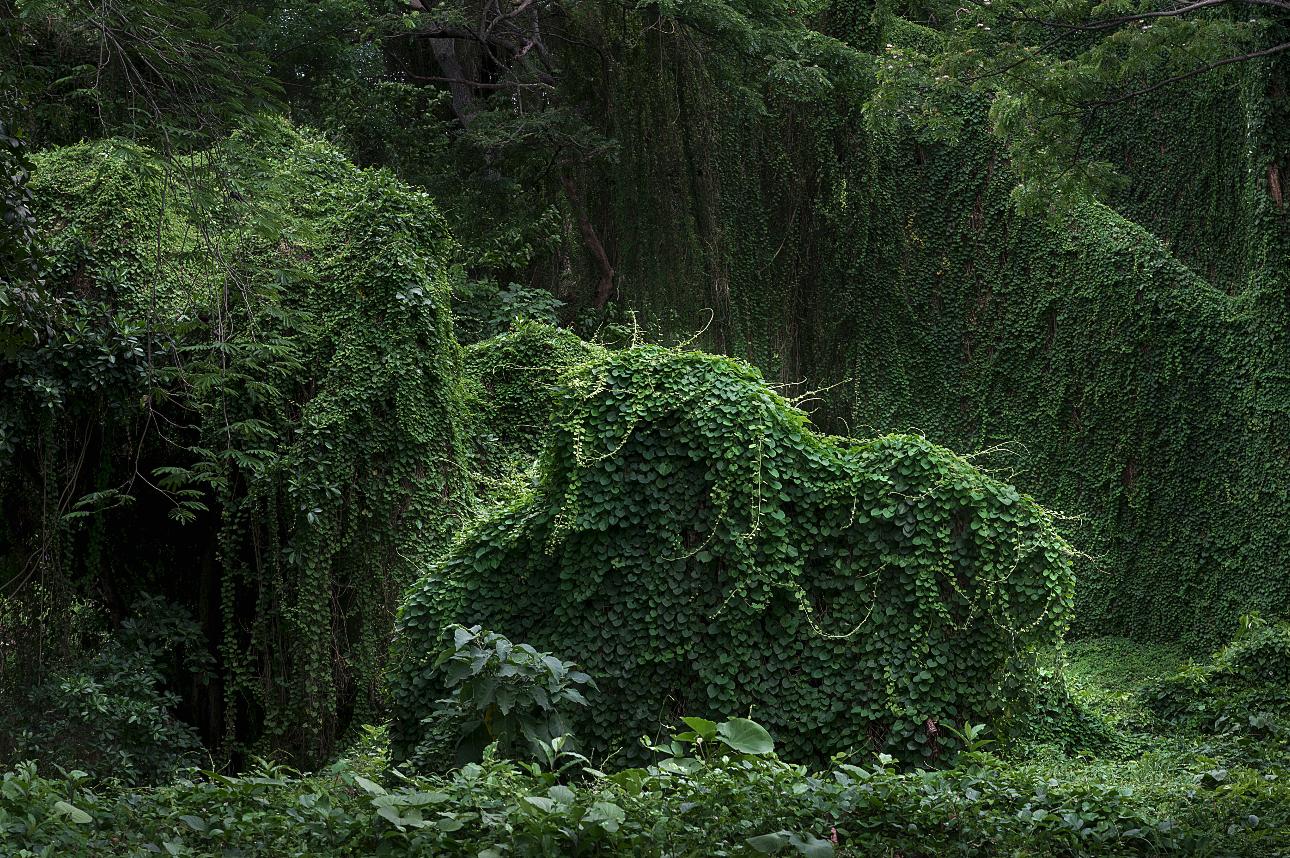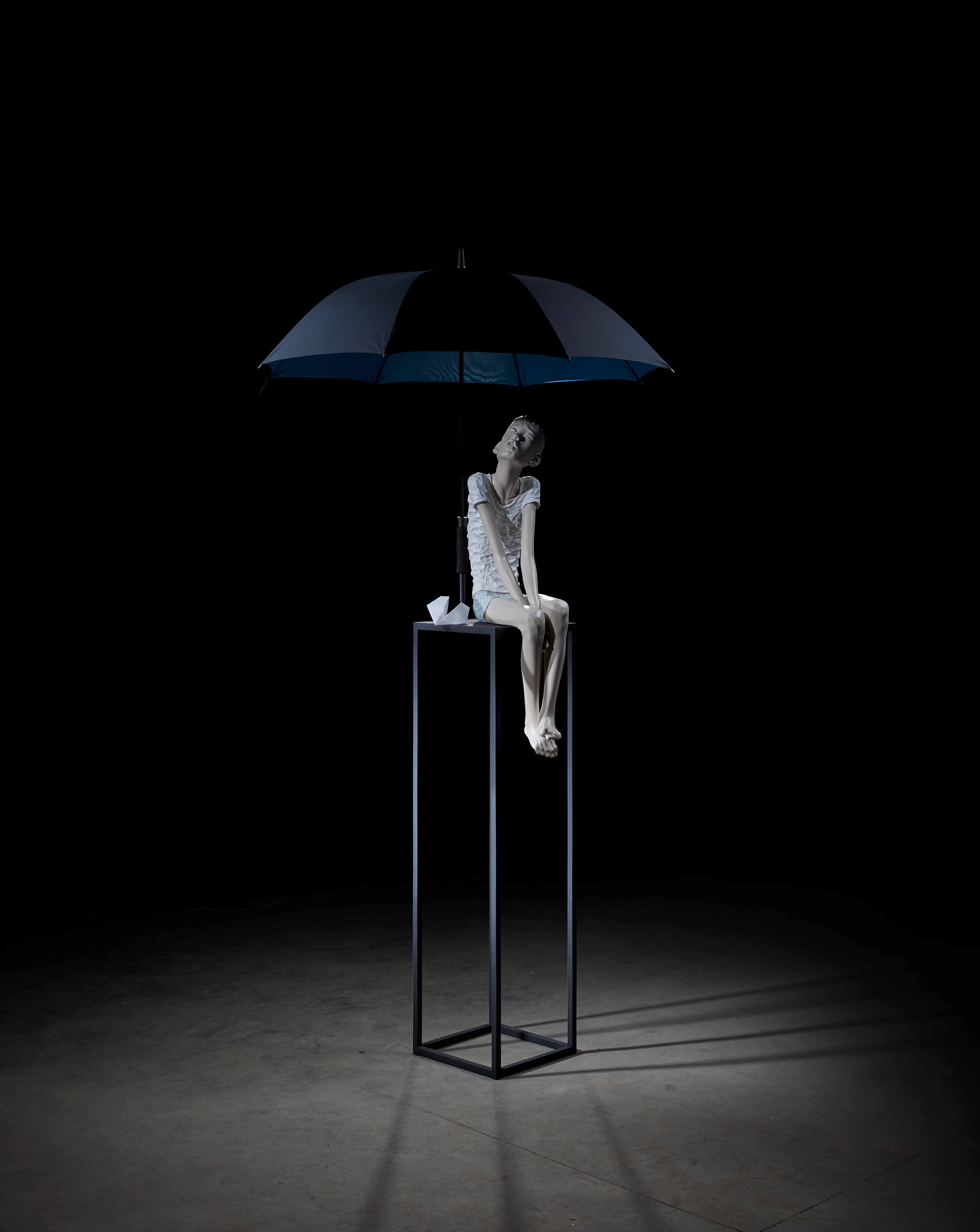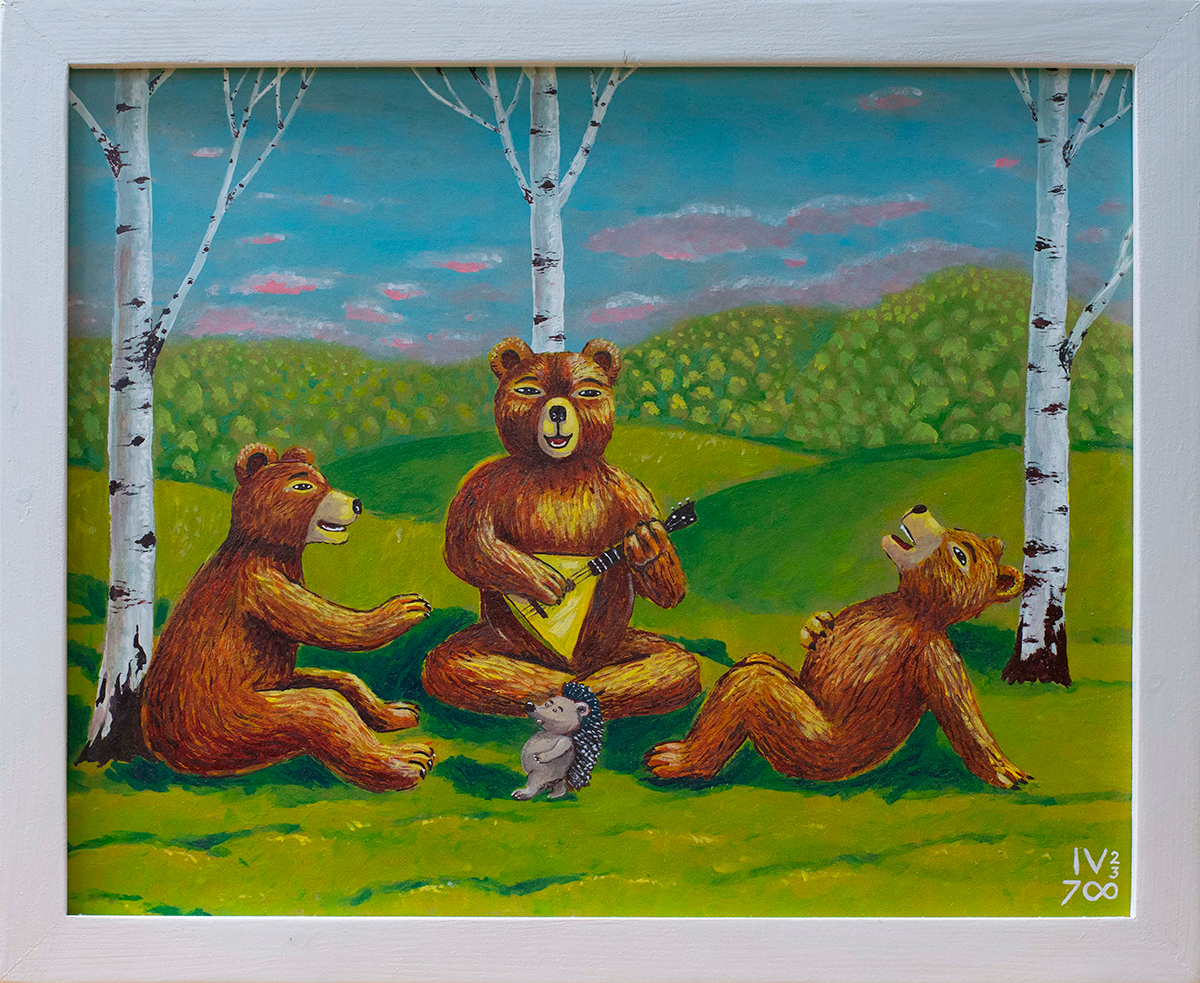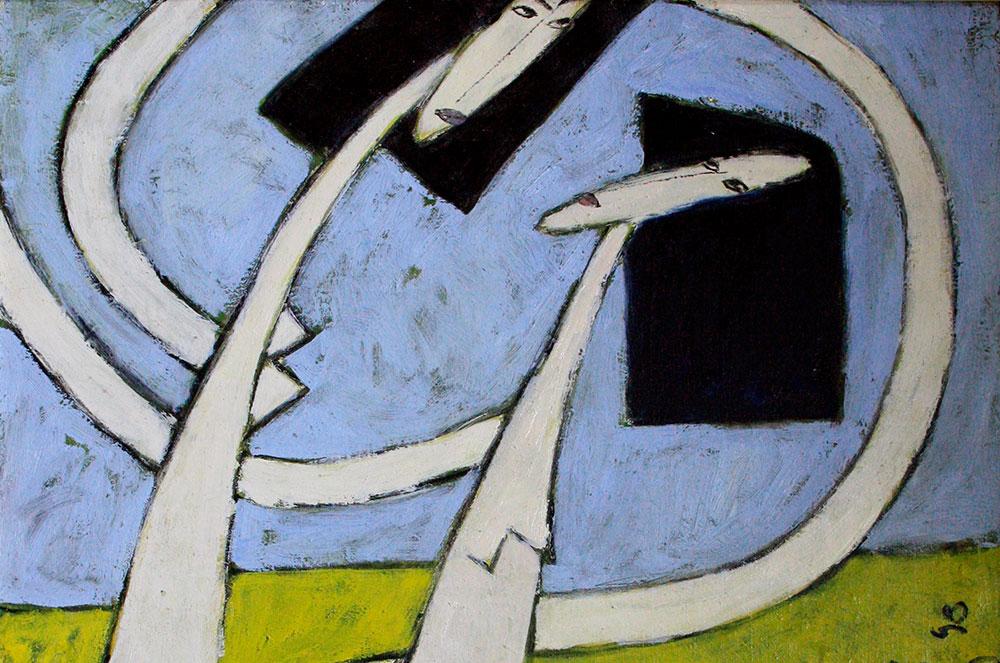Erarta Museum of Contemporary Art presented an exhibition by Evgeniy Tykotsky encouraging the viewers to check if they can feel the Universe speak to their souls through art
- Lightness of subjects coupled with emotional intensity resulting in profoundly engaging paintings
- An artist to whom visual arts were akin to a magic ritual
- A painter in the role of a psychic medium capable of showing the way towards the truth
The art of Evgeniy Tykotsky, a fixture of the unofficial, underground Leningrad art scene, has been the subject of many a laudatory review. However, much more has been written about the artist’s personality: in the memoirs, he comes across as an incredibly affable, beaming genius, one who possessed and eagerly shared with the world certain simple truths.
Incidentally, underground art is by no means always avant-garde or futuristic. Evgeniy Tykotsky rose to fame in the late 1970s after trying his hand at a rather traditional art print medium of etching. His prints were imbued with an atmosphere of magical realism, while his triangular-headed protagonists seemed both conventionalised like animated film characters and fully relatable like people in Marc Chagall’s paintings – climbing onto the roof in the middle of the night to play the fiddle or soaring high above the city in broad daylight. In addition to humans, the artist’s creative universe was populated by all sorts of little donkeys, horseys, and dove-eyed wolves.
Tykotsky’s move from Moscow to Leningrad, involvement in the TEII shows, and a studio at Pushkinskaya-10 all facilitated his immersion in a kind of cultural environment in which his art was primarily targeted at his fellow artists – or, more to the point, friends. It was in those days that his etchings began to be perceived (and still are) as having unquestionable value, even though Evgeniy himself would often sneer at the consumerist approach to art in general and at ‘brand-like’ artist names in particular.
What path, then, should a nonconformist talent take if his works are unconditionally liked by everyone? Naturally, abandon the practice that is universally praised and discover new horizons! That is how Tykotsky transitioned from printmaking to painting. The canvases showcased in this exhibition emerged between the 1980s and 2000s and are currently in private collections of the avid fans of Evgeniy Tykotsky’s art, Alexander Levin and Oleg Skorik. Thanks to the efforts of Levin, a friend of the late artist, they once again found their way to a larger audience – this time not solely comprised of close associates and the initiated.
Lightness of subjects coupled with emotional intensity makes these paintings profoundly engaging. Their secret is simple. A well-red person and a philosophy buff, Evgeniy Tykotsky was an artist in the position of a psychic medium – a role perhaps no longer popular. To him, visual arts were akin to a magic ritual wherein the artist was not some unchallenged genius, but merely a guide showing the way to a truth relayed by another entity, be it God or the outer space. It is a kind of truth that is not altered with time, but alternately takes on new forms: now a fresco, now an abstract painting. Throughout his creative life, guided by the ‘moral law within him,’ Evgeniy Tykotsky searched for an outside impulse in order to transmit it to others via his prints and canvases.
The artist believed that the definite masterpieces in the world art history were those that prompted an act of communication with the absolute. To a certain degree, Tykotsky himself was capable of this, although we can no longer ask the artist which of the works on display bear a palpable imprint of this cosmic energy. This leaves it up to the viewers to check for themselves if they can feel the Universe speak to their souls through art.
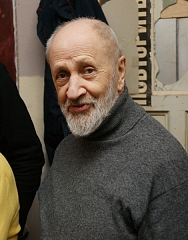
Evgeniy Tykotsky was born in 1941 in Sobinka, Vladimir Oblast. Between 1959 and 1960, he attended the Moscow Civil Engineering Institute, later graduating from the School of Visual and Graphic Arts of the Moscow Teachers College in 1969. Tykotsky started taking part in both official and underground ‘apartment’ exhibitions in 1969. Working in the medium of etching since the early 1970s, the artist discovered the subjects, characters, and expressive tools he would later revisit in painting. Member of the Artists’ Union of the USSR since 1975, in 1984, having moved to Leningrad, Evgeniy also joined the Society for Experimental Visual Art (TEII) and took part in all of its exhibitions. Tykotsky was a mainstay of the Pushkinskaya-10 art centre since the centre’s founding until his death in 2019. The artist’s works are currently found in museum and private collections worldwide.


